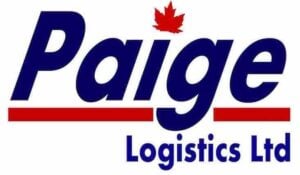Rail Intermodal Freight Transportation Services Canada
Revolutionizing the Global Supply Chain:
How Rail Freight Transportation is Leading the Charge!
If you’ve ever wondered how the goods you buy from around the world get to your front door, it’s likely that rail freight transportation was important.
Rail freight services is a crucial link in the global supply chain because it can deliver cargo across great distances quickly, effectively, and responsibly.
In this article, we’ll examine the development of rail freight transportation, its benefits and drawbacks, as well as its potential for future development.
Ocean Freight Services China to Canada
Ocean Freight Services China to Canada
Canadian rail intermodal freight forwarder moves consumer items, raw materials, heavy equipment, and chemicals. Shipping by train in canada transports 70% of intercity freight, making them vital to numerous businesses.
Can you ship by train in Canada?
At Paige Logistics we manage your load together with our partners who are the main rail freight companies in Canada are the Canadian National Railway and the Canadian Pacific Railway. Their massive rail networks connect key cities and ports across Canada and to the US.
What is shipped by rail in Canada?
Canadian rail transports oil, gas, grain, minerals, and consumer goods. Forestry and mining export their products by rail.
Canadian railroads have invested in innovative technologies to improve operations and reduce environmental impact.
Many railroads utilize cleaner locomotives and fuels to improve air quality. Advanced analytics and data-driven routing and scheduling are reducing waste and streamlining processes.
Canadian rail shipping benefits from new technologies. Autonomous trains, drones, big data analytics, and the IoT may make the sector safer, more efficient, and cheaper.
Canadian businesses and customers rely on rail freight. Innovative railroads will further transform the global supply chain.
Advantages of Rail freight Shipping
Rail is efficient. Railroads can move large amounts of goods over long distances quickly and cheaply. Rail intermodal produces less CO2 per ton-mile than vehicles or planes.
Railroads may carry bigger loads than trucks, reducing goods delivery trips. Rail freight is also reliable. Railroad schedules assist companies to better manage cargo and delivery.
This method is less influenced by traffic and weather delays than other modes of transportation, making it better for time-sensitive goods.
Types of Rail Freight Transportation
Depending on the sort of cargo being transported, rail freight transit takes numerous shapes. For example, heavy haul rail freight entails transporting huge and heavy equipment such as locomotives, turbines, and transformers.
Refrigerated rail freight, on the other hand, transports perishable items like food and pharmaceuticals.
Railroads link regions and markets for cross-border rail freight. Short-line rail freight transports goods on regional railroads that link to larger networks.
Intermodal freight shipping uses rail and truck to transfer products more efficiently and cheaply.
Rail Freight Logistics Management
Logistics management—planning, implementing, and controlling goods movement—is crucial to rail freight transportation.
Distance, weight, volume, and market demand and supply affect rail freight transportation prices.
Market data and rail freight industry trends help companies make shipping and delivery decisions.
Rail freight capacity planning and demand forecasts help railways anticipate and optimize customer needs.
Rail freight equipment leasing and maintenance provide safe and efficient freight movement.
Businesses must choose the right railroad and have strong customer service to ensure their items arrive on schedule and in good condition.
Sustainability in Rail Intermodal
Sustainability is becoming more important in rail freight transportation as businesses and customers become more environmentally conscious. Railroads currently emit fewer greenhouse gases per ton mile than cars and airlines.
However, railroads continue to reduce their carbon impact and investigate innovative technology. Railroads reduce pollution by using cleaner locomotives and fuel.
Many railroads are buying contemporary locomotives that use less fuel and emit less nitrogen oxides and particulate matter. Some railroads are considering liquefied natural gas or hydrogen locomotive fuels.
Railroads are also trying to cut waste. Some railroads use advanced analytics and data-driven technology to optimize routing and scheduling, reducing empty railcars.
Others are improving yard operations and train dispatching to reduce idle and waiting. Sustainability is becoming more important in rail freight transportation as businesses and customers become more environmentally conscious.
Railroads currently emit fewer greenhouse gases per ton mile than cars and airlines. However, railroads continue to reduce their carbon impact and investigate innovative technology.
Railroads reduce pollution by using cleaner locomotives and fuel. Many railroads are buying contemporary locomotives that use less fuel and emit less nitrogen oxides and particulate matter.
Some railroads are considering liquefied natural gas or hydrogen locomotive fuels.
Railroads are also trying to cut waste. Some railroads use advanced analytics and data-driven technology to optimize routing and scheduling, reducing empty railcars.
Others are improving yard operations and train dispatching to reduce idle and waiting.
Future of Intermodal Rail Transportation
New technology and improvements will transform rail freight transportation.
Automation and AI are promising development areas. Autonomous trains and drones could make rail freight transportation safer, more efficient, and cheaper.
Digital technologies for logistics management and operations are another breakthrough.
Big data analytics, predictive modelling, and the IoT could help railroads optimize operations, cut costs, and improve customer service. Blockchain technology could reduce fraud and inaccuracy in rail freight transactions.
Rail intermodal transports commodities over large distances quickly, efficiently, and sustainably throughout the global supply chain.
Rail freight shipping is efficient, reliable, and sustainable. Logistics service management over see’s LCL rail freight transit, which includes heavy haul and refrigerated freight.
Rail freight shipping is becoming more environmentally conscious, and railroads are already attempting to reduce their carbon footprint and explore new technologies and ideas.
Rail freight intermodal future is bright, with new technology and innovations poised to alter the industry.
Overall, rail freight transportation is an important component of the global economy, and both businesses and consumers rely on it to transfer goods throughout the world. Railroads will play an increasingly more important role in influencing the future of the global supply chain as they continue to innovate and develop.
via rail shipping rates
cn rail shipping rates
2023 Global Leader In Shipping

Author & Chief Executive Officer at Paige Logistics Ltd. → Experienced Operations Manager with a demonstrated history of working in the Freight Shipping, Trucking and the Railroad Industry.
